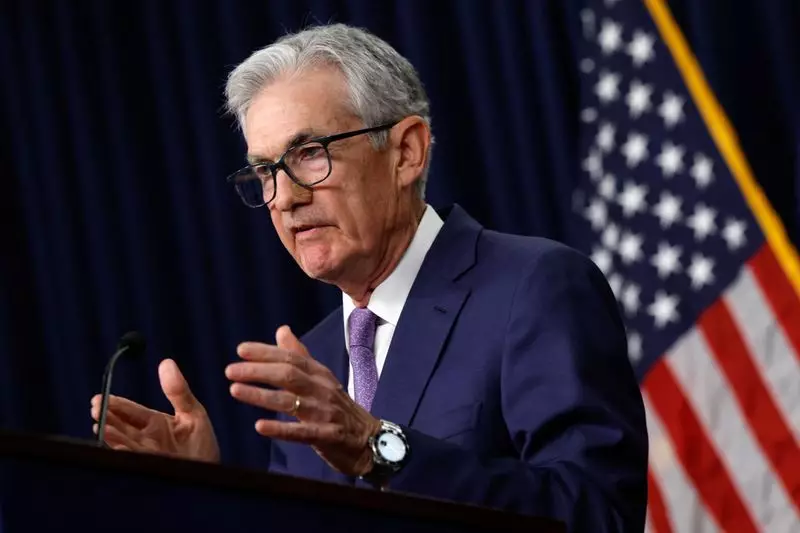The current economic landscape presents a significant challenge for Jerome Powell as he moves through 2025 as the Chair of the Federal Reserve. As he attempts to maintain an independent and apolitical stance for the central bank, he must also consider the ramifications of policy shifts introduced by the newly elected administration of Donald Trump. The delicate balance of steering monetary policy amidst heightened inflationary threats and political pressures is a task that could prove monumental.
With Trump’s administration poised to implement aggressive economic policies, Powell is confronted with the reality of adjusting the Fed’s strategies without falling into the trap of speculation. The nuance of Powell’s leadership is evident in recent statements, where he emphasized a commitment to not predict the influence of political maneuvers on economic behavior. “We don’t guess, we don’t speculate, and we don’t assume,” he asserted. This caution, however, seems to be fading as recent data points suggest that Fed officials are beginning to factor in the likely consequences of upcoming economic policies into their monetary projections.
The Federal Reserve recently slashed interest rates, completing a total reduction of a full percentage point since September. However, along with this easing, new forecasts indicate a notable shift towards a conservative approach in the coming year. Instead of the four rate cuts initially anticipated, Fed officials are now aligning their expectations with a leaner forecast of just two cuts in 2025. The data signals an overarching concern that inflation could stubbornly hover at 2.5%, a rise from previous estimations that predicted it would linger around 2.2%. This presents a challenging dilemma for Powell as he weighs the impending economic landscape against the Fed’s traditional mandates.
Trade Policies and Their Inflationary Implications
One of the pressing factors influencing Powell’s decisions is the proposed economic agenda of the Trump administration, which is rife with contentious trade policies, including new tariffs and stringent immigration regulations. The anticipated effects of these measures could unleash inflationary pressures on the economy. Higher tariffs have the potential to elevate consumer prices; at the same time, restrictions on immigration may limit labor availability, consequently driving up wage demands.
Despite attributing the latest inflation forecasts to hard data rather than political strains, Powell has recognized the urgency of addressing the central economic threats. In internal discussions, Powell echoed the importance of understanding the complex ways tariffs impact both inflation and the broader economy. “What the committee’s doing now is discussing pathways and understanding again the ways in which tariffs can affect inflation and the economy,” Powell stated. This demonstrates a proactive strategy, allowing the Fed to respond methodically when the actual policy changes unfold.
The Dichotomy of Economic Perspectives
While Powell emphasizes caution, advisors close to Trump have expressed confidence that the administration’s initiatives could mitigate potential inflationary risks. For instance, Treasury secretary-designate Scott Bessent downplayed inflation fears by arguing that if tariffs increase prices for specific goods, consumer spending would simply shift away from those items to maintain balance, thus preventing widespread inflation. However, economic analysts urge a more conservative viewpoint, suggesting that under current circumstances, businesses may be more likely to pass increased costs onto consumers, especially during times of full employment.
JPMorgan’s chief economist, Michael Feroli, points out that the Fed’s current context is significantly different from the low-inflation environment experienced prior to Trump’s first term. Given the current elevated inflation rate, there is a broader array of factors at play that could pressure businesses to adjust pricing strategies. Additional insights from economists like Ray Farris suggest that the timeline for price adjustments is uncertain, and incremental increases could result in heightened perceptions of persistent inflation among consumers.
As Powell navigates this treacherous terrain, the Federal Reserve’s credibility as a data-driven entity hangs in the balance. The ongoing discourse within the Fed must reflect an alignment of analytical rigor with a steadfast commitment to independence from political influence. The stakes are profoundly high as the global economy braces for policy shifts that could induce significant volatility.
Powell’s phase through 2025 promises to be a critical period as he aims to uphold the Federal Reserve’s integrity while addressing the realities of shifting economic policies. The multitude of economic indicators, along with the unpredictable nature of political administration, obliges the Fed to strike a careful equilibrium between fostering economic growth and managing inflationary pressures. As the overarching challenges mount, the true test will be how effectively Powell can adapt policy without compromising the principles of the Federal Reserve.

